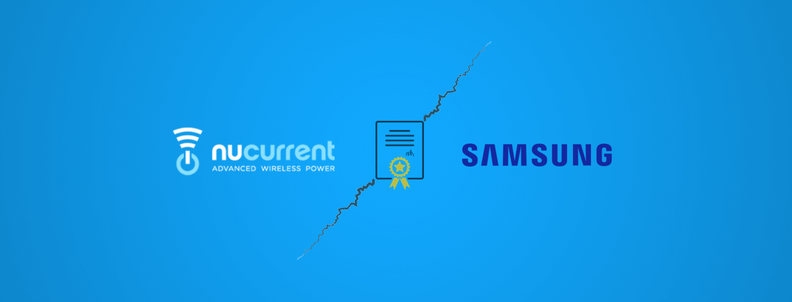NuCurrent has been very active in providing wireless charging solutions since 2009, which were commercialized in 2012, while Samsung introduced a wireless charging kit as an add-on to the Galaxy S4 around 2013.
After being introduced to Samsung at Consumer Electronics Show in 2015, both the companies collaborated officially under various confidentiality and non-disclosure agreements, as Samsung showed interest in NuCurrent’s solutions for improved wireless antennas.
Later in 2016, NuCurrent found that Samsung had used their wireless charging technology in their widely famous smartphones like Note 5 and Galaxy S6 Edge+ without attributing NuCurrent or informing them.
Riled, NuCurrent filed a lawsuit a complaint alleging trade secret misappropriation and patent infringement against the Korean tech giant.
It was speculated that emulating the sample coils provided by NuCurrent to inculcate wireless charging coils, the performance of wireless charging in the aforesaid devices was improved to a great extent.
NuCurrent suspects that the increased efficiency and low heat generation capability in their double conductive layers and multilayer multi-turn technology are a lot similar to what Samsung has used in their devices. Also, NuCurrent designed a wireless coil specifically for wearable devices which was used in Samsung Galaxy S3 watch.
Coming back to the case, there’s much more matter to it than what the proceedings reveal. NuCurrent filed multiple patents on their improved induction charging technology. These patents now have become the backbone of their infringement case against Samsung. The patents involved in this case are US8680960, US9300046, US8698591, and US8710948.
NuCurrent being a wireless power solution provider claims that Samsung used the solutions presented by their team for improving wireless charging of Samsung Galaxy S6 and implemented it in S7 and S8 against the confidential agreement between both sides.
Continuing our practice to analyze and generate some ideas on the strength of the patents involved in recent litigation, we took this case on our plate. We conducted a preliminary analysis on NuCurrent’s patent US8680960 in hope to find whether NuCurrent actually is the first company to invent this improved wireless charging solution or is there a relevant prior art out there, predating NuCurrent’s patents.
The patent US8680960 describes a method of using induction to convert power supply to drain and that too wirelessly. This is a popular technology and we were well aware of the fact that many companies have been working on it as their main operations. This is the first rabbit hole that we jumped in to look for hints of the prior art.
Going back to the time when the concept of wireless charging was really new, we found the company ‘Splashpower’ which has been manufacturing wireless chargers since 2001. There’s a strong chance of finding relevant insights among the 20 patents published by the Splashpower from before 2009 (the priority date of NuCurrent’s patent). Fulton Innovation, Toshiba corporation, the Schaffner group and Witricity have also been actively working in the wireless energy transfer domain with many publications taking us closer to the subject patent. Apart from the prominent companies, some reports published in 2008 by MIT researchers reveal a similar power transfer mechanism.
In the search for another lead for prior art, we headed over to the file history of ‘960 patent. After analysing the relevant classes used by the examiner, we found that five highly relevant classes presented in the citations were not considered by the examiner during his review.
Wireless charging has been a highly active technology in the market and the principles used in NuCurrent’s patent have been found in both conventional and non-conventional forms prior to the priority date. All of these references give a clear hint that the chances of finding a relevant prior art are extremely high and so are the chances of turning this case around.
In case if you’re interested in knowing in detail about all the references that we found and why we think that there can indeed be a relevant prior art somewhere out there, consider downloading our full preliminary report using the form below:
Analysis Performed By: Nikhil Gupta, Manager, Patent Search, and Akshay Aggarwal, Junior Research Analyst, Patent Search









